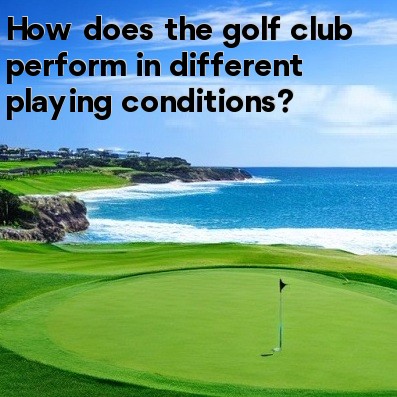
In golf, how does the golf club perform in different playing conditions?
Golf is a sport that is played outdoors and is highly influenced by the various playing conditions. The performance of a golf club can be greatly affected by factors such as weather, course conditions, and personal playing style. Let's take a closer look at how the golf club performs in different playing conditions:
- Weather: Weather conditions play a significant role in determining how a golf club performs. Wind, for example, can greatly impact the flight and distance of the ball. A strong headwind can make it difficult to achieve the desired distance, while a tailwind can help carry the ball further. Rainy conditions can make the course wet, affecting the bounce and roll of the ball. Players need to adjust their club selection and shot strategy accordingly.
- Course Conditions: The condition of the golf course can vary from one day to another. The firmness or softness of the fairways, greens, and rough can influence how the golf club interacts with the ground. Firm conditions allow the ball to roll more, while softer conditions may require more loft to lift the ball off the ground. The presence of hazards such as sand bunkers and water hazards can also influence club selection and shot execution.
- Personal playing style: Each golfer has their own playing style and technique. The performance of a golf club can be influenced by factors such as swing speed, swing plane, and angle of attack. Golfers with a higher swing speed may benefit from using clubs with a lower loft angle to achieve a longer carry distance. Similarly, golfers with a steeper swing plane may find it easier to make solid contact with irons designed for a steeper approach angle.
In addition to these factors, the design and specifications of the golf club itself can impact its performance in different playing conditions:
- Clubhead design: The design and construction of the clubhead can greatly influence its performance. Blade-style irons, for example, offer more control and precision but may be more challenging to hit for beginner golfers. Cavity-back irons, on the other hand, provide more forgiveness and a larger sweet spot, making them more forgiving on off-center hits.
- Shaft flex: The flexibility of the golf club's shaft can impact its performance. Graphite shafts tend to be more lightweight and offer more flexibility, allowing for increased clubhead speed and distance. Steel shafts, on the other hand, provide more control and accuracy but may require more strength to swing consistently.
- Grip: The type of grip on the golf club can impact the golfer's ability to maintain control and prevent slippage during the swing. Grips with a softer, tackier feel may be preferred in wet or humid conditions, while firmer grips may provide more stability in dry conditions.
Overall, the performance of a golf club in different playing conditions is a combination of factors such as weather, course conditions, personal playing style, and the design and specifications of the club itself. Golfers need to adapt to these varying conditions and make appropriate club and shot selections to maximize their performance on the course.





